NSW mouse plague: Farmers losing millions as rodents devour homes and crops
Billions of mice are marauding through western NSW devouring everything in their path, nibbling people in their beds, their homes and cars and causing economic havoc.

NSW
Don't miss out on the headlines from NSW. Followed categories will be added to My News.
It’s a real life horror movie.
Billions of mice marauding through western NSW eating everything in their path.
Not just eating things, but nibbling people in their beds and in their homes and cars.
Farmers have lost a fortune in prized grain in the plague, which is causing economic havoc across western NSW.
Those on the land and living in towns have had no relief from the waves of rodents, which have chewed through home walls, infested schools and devoured harvests following lean years of drought.
For Warren farmer Ben Storer, whose town has been overrun by more than a billion mice, the costs have already blown out to hundreds of thousands of dollars.
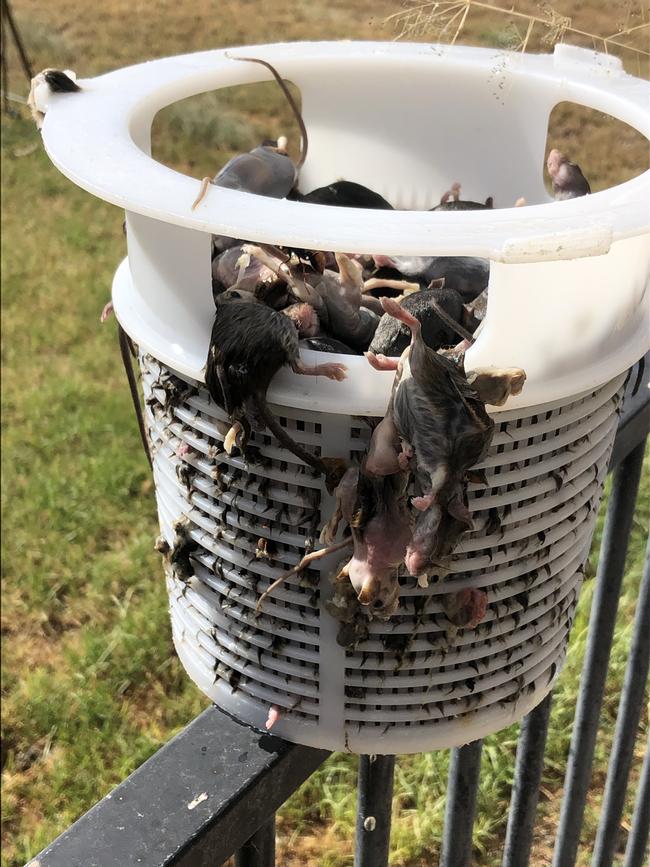
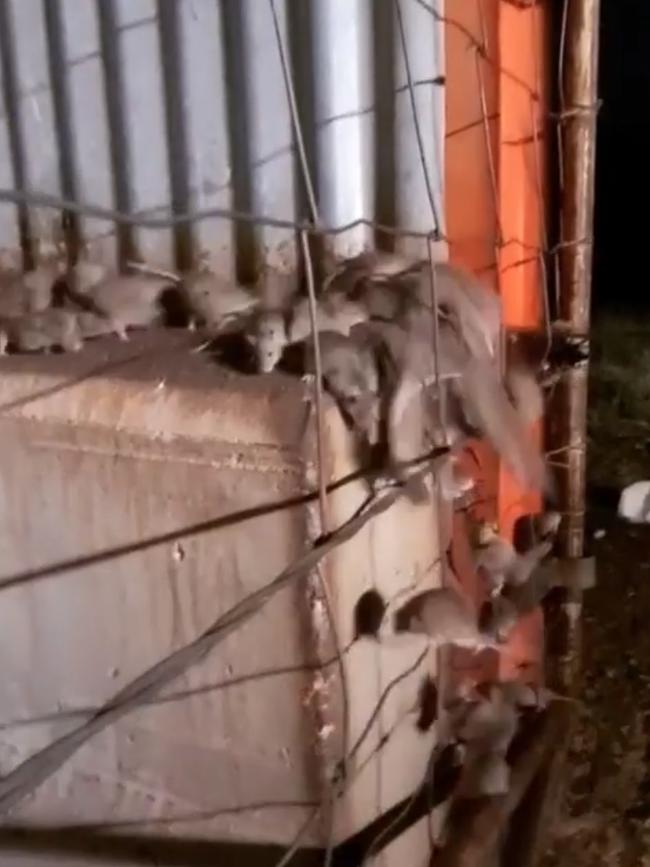
Mr Storer’s 5000ha cattle and cropping operation, which he runs with brothers Greg and Doug 60km north of Warren in the state’s central west, was one of the worst hit.
“They totally demolished 800 acres worth of sorghum (wheat). You see a pile of sorghum and they eat it all. The mind boggles at what the little bastards can do,” Greg said.
After three devastating years of drought during which the brothers had no income, the plague is a crushing blow.
“We had (mice) bad in the 1980s once and we’ve had outbreaks of them here and there, but nothing this bad,” Ben said.
“To then lose a whole sorghum crop and some 1000 roles of hay … you could easily factor in a couple of hundred thousand dollars for the sorghum (grain), and then, with the value of hay during the drought, you could probably say it was worth the same.”
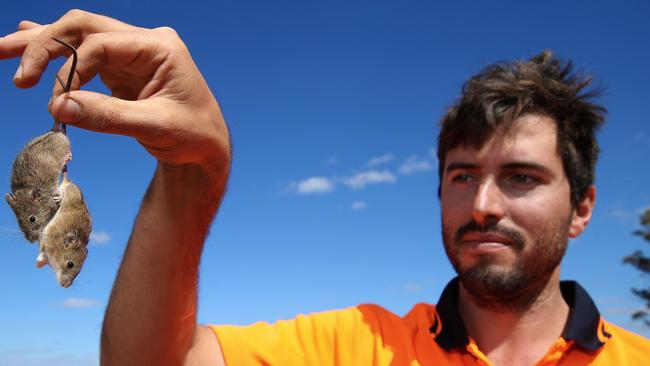
Compounding farmers’ frustrations at being faced with waves of mice is the difficulty of combating them.
Aerial baiting is one method, but even that seemed futile.
“We put the plane over the sorghum once and we gave up; it just didn’t make a difference,” Ben said.
Matthew Madden, the chair of the NSW Farmers Association’s grains committee, said there had been an “extraordinary amount of damage” to stored fodder such as hay across the state’s central west.
“It’s costing hundreds of thousands of dollars for particular individuals, and fodder like hay is hard to replace.
“They made it in the good times for the bad times, like upcoming drought,” he said.
The total damage bill for farmers across the state will run into hundreds of millions of dollars.
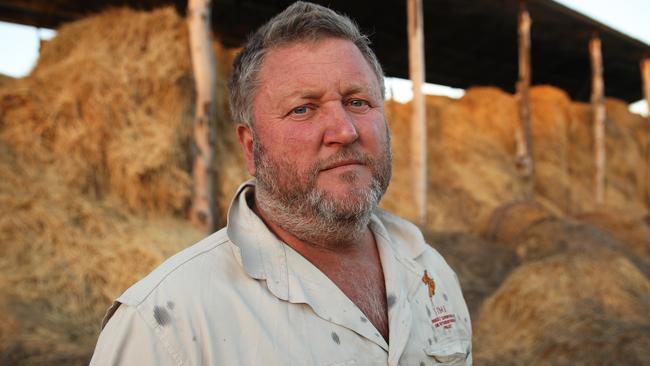
Lockie Roberts runs a mixed sheep, citrus and cropping farm at Mumble Peg, east of Warren.
“In one paddock, as we ploughed it, they were just popping out of the ground,” he said.
“The cost to do one plane load of dropping baits in our paddocks is between $10,000 and $20,000.
“The drought busted us for three years, then we had an awesome year. Now the mice are carrying on.”
The stench of the plague is another issue for rural residents to deal with.
“On some of our properties they’re eating holes in the wall … you just get so sick of the smell,” Mr Roberts said.
In the stoic fashion of farmers who have weathered so much, he said there was little point in holding their hands out for help.
“It is a plague, it is a natural disaster, so the government could definitely help by subsidising poison, doing some baiting themselves … but we’re an industry that’s always taken care of ourselves,” he said.
“We can’t fight nature, we’ve just got to manage it the best we can.”

CSIRO research officer Steve Henry said little research had been done on the economic impact of mouse plagues on agriculture.
A 1994 study, completed on a 1993 outbreak, pointed to $67m worth of damage for farmers that year. Adjusted for inflation, that is a blow worth more than $127m today.
Mr Henry said more than 800 mice per hectare was considered a plague, but “in this scenario it’s way higher”.
It means more than a billion mice are likely to have torn through the Warren Shire alone.
Just as taxing is the social impact of the plague, with Mr Henry saying rural citizens were “exhausted”.
“These people have weathered a few years of drought, now they’re getting smashed by mice,” he said.
Federal MP Mark Coulton, whose massive western NSW electorate of Parkes includes Warren, said the government stepping in on baiting operations was “not without it’s risk”.
His own cat died after consuming a poisoned mouse.
WINTER IS COMING FOR MICE
The approaching winter can’t be relied upon to stop the state’s mouse plague, according to experts who say that spring breeding could bring a new wave of hungry pests.
CSIRO research officer Steve Henry said this year’s outbreak, the result of a bumper harvest following a wet summer, would fall away during winter when the vermin turned on each other.
“There’s a lot of talk about wet weather and frost wiping populations out, but that’s not accurate,” he told The Daily Telegraph.

Rather, he said, population would “crash away” when it hit a certain point, while breeding would also slow down over winter as the rodents “focus on survival”.
“The numbers just get to the point where there’s so many mice in the system that they’re interacting a lot with each other, spreading disease, running out of food, and then they turn on each other,” he said.
Mr Henry warned the important metric was how many mice survived the winter — with the possibility of back-to-back plagues if numbers did not fall significantly over the colder months.
“It depends on how many survive over the winter, because that’ll dictate how many there are come spring,” he said.
Mice become sexually mature after just six weeks and can have litters of pups just three weeks apart, with up to six young rodents produced each time.
“There’s no break in the production of offspring, that’s how their numbers can boom so quickly,” Mr Henry said.
PLAGUE PROVIDES KIDS WITH LIFE LESSONS
There’s not a child in Warren without a story to tell about the mouse plague.
“We’d go into our shed at home and there’d be thousands of them,” Hamish Barclay, 10, said.
“The hay bales were all turned to mush from them.”
Joe McNair, 11, said at his father’s workshop the mice were so thick “they’d be running across your feet”.
Ask anyone in the bush and they’ll tell you it’s bad across the west of the state, but there seems to be agreement that Warren and the region around it is the epicentre.
And there is little relief at school, with the 140 kids and staff at Warren’s St Mary’s Primary School recalling endless tales of mice infesting classrooms and the schoolyard.
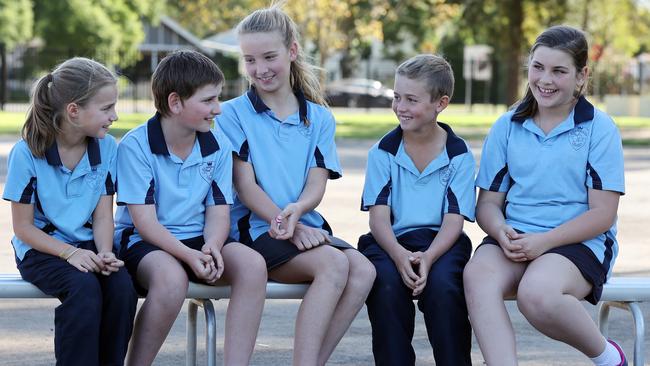
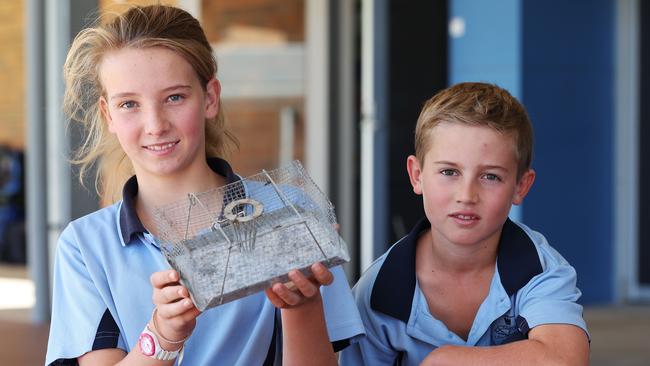
“We set up mouse traps in the office and they’d just constantly be going off around us,” principal Terina McNair said.
“They chewed through our pencils, books, paperwork … we just kept buying baits and traps, we just had to find it in our school budget.
“The most we got from one class in one night was 17 … in one classroom they moved a pile of pillows and there was a whole nest of about 20 mice.”
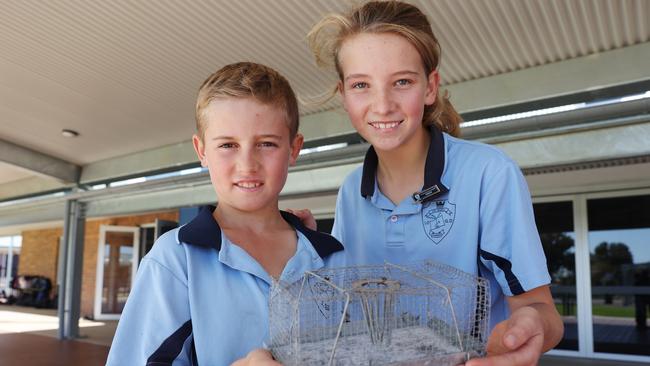
Trundle Central principal John Southon knows the cumulative impact of drought and plague.
“It’s just the next cycle for them (the kids) … drought, floods, rain, mice,” he said.
“The bigger problem we’ve got is we’ve been forgotten about … soon as we got some rain, everyone in the city thought it’s cured.
“I don’t think people realise the challenge when you’ve got to change your sheets every few days because the mice are getting in your beds.
“What I really worry about for our kids is that they think the continued struggles and disadvantages are normal.”





